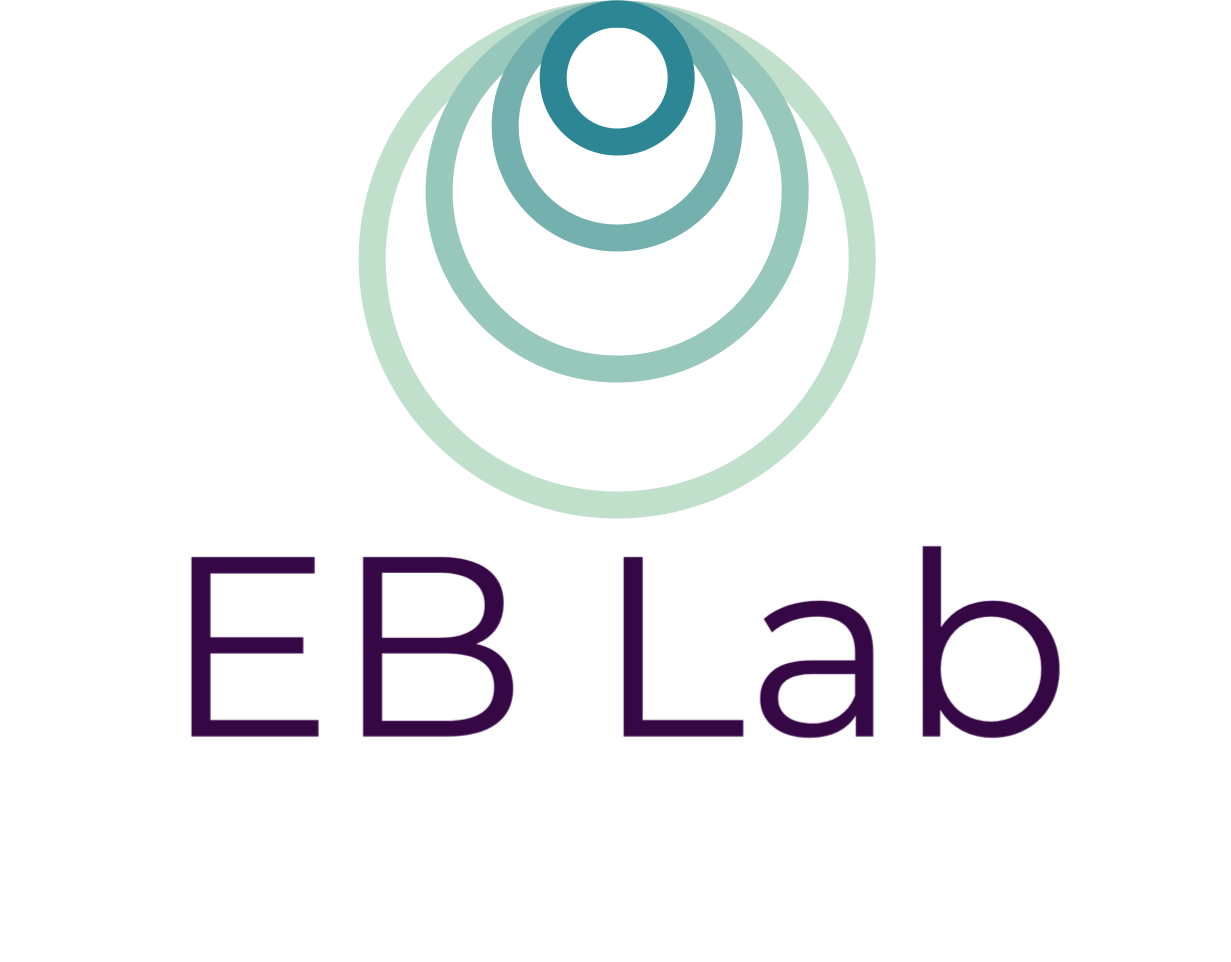ARTICLES
(names in bold are current or former EB Lab members)
Wood, A., Chadha, S., Liu, C., Yuan, Q., Davis, A., Elnakouri, A., Scholer, A., & Boker, S. (under review). Laughter indicates perceived similarity among friends and strangers.
Kerry, N., Haempke, J., Wood, A., Tsang, S., Barrentine, K., Oishi, S., White, K., & Clifton, J. (2025). World Beliefs Moderate the Effects of Trauma and Severe Illness on Emotional Distress. Journal of Personality.
Tsang, S., Kaiser, S., Tong, X., & Wood, A. (2025). How emotion contagion changes as strangers become acquainted: A longitudinal conversation study. Collabra
Tsang, S., Barrentine, K., Oishi, S., & Wood, A. (2025). How a Campus Shooting Did (and Did Not) Change Students’ Daily Activity and Beliefs About the World. Journal of Experimental Social Psychology
Tsang, S., Barrentine, K., Chadha, S., Oishi, S., & Wood, A. (2024). Social exploration: How and why people seek new connections. Psychological Review.
Hansen, Z., Martin, J., Niedenthal, P., & Wood, A. (2024). Gender Differences in the Form and Function of Naturally Occurring Smiles. Collabra: Psychology.
Liu, H., Tsang, S., Wood, A., & Tong, X. (2024). Longitudinal Sentiment Analysis with Conversation Textual Data. Fudan Journal of the Humanities and Social Sciences.
daSilva, E. & Wood, A. (2024). How and why people synchronize: An integrated perspective. Personality and Social Psychology Review.
Chadha, S., Ha, T., & Wood, A. (2024). Thinking you're different matters more for belonging than being different. Nature Scientific Reports.
Tsang, S., Lipson, J., Snyder, A., Chadha, S., & Wood, A. (2024). People constrain their semantic associations when talking to both friends and strangers. Journal of Experimental Psychology: General.
Wood, A. & Coan, J.A. (2023). Beyond nature versus nurture: The emergence of emotion. Affective Science.
Grossman, T. & Wood, A. (2023). Variability in the expression and perception of positive affect in human infancy. Social Cognitive and Affective Neuroscience.
Chadha, S., Kleinbaum, A. M., & Wood, A. (2023). Social Networks are Shaped by Culturally Contingent Assessments of Social Competence. Nature Scientific Reports.
Furrer, R., Schloss, K., Lupyan, G., Niedenthal, P. & Wood, A. (2023). Red state, blue state: Do dichotomized political maps increase perceived polarization? Cognitive Research: Principles and Implications.
Wood, A., Templeton, E., Morrel, J., Schubert, F., & Wheatley, T. (2022). Tendency to laugh is a stable trait: Findings from a round-robin conversation study. Philosophical Transactions of the Royal Society B.
Wood, A., Sievert, S., & Martin, J. (2022). Semantic similarity of social functional smiles and laughter. Journal of Nonverbal Behavior.
Wood, A., Kleinbaum, A., & Wheatley, T. (2022). Exposure to cultural diversity predicts connectedness in a social network. Journal of Personality and Social Psychology.
Zhao, F., Wood, A., Mutlu, B., & Niedenthal, P. (2022). Faces synchronize when communication through spoken language is prevented. Emotion.
Woodard, K., Plate, R., Morningstar, M., Wood, A., & Pollak, S. (2021). Categorization of vocal emotion cues depends on distributions of input. Affective Science.
Martin, J., Wood, A., Cox, W., Sievert, S., Nowak, R., Gilboa Schechtman, E., Zhao, F., Witkower, Z., Langbehn, A., & Niedenthal, P. (2021). Reward, Affiliation, and Dominance Smiles are Associated with Distinct Mental Content. Affective Science.
Wood, A. (2020). Social context influences the acoustic properties of laughter. Affective Science. https://doi.org/10.1007/s42761-020-00022-w
Niedenthal, P. & Wood, A. (2019). Does emotion influence visual perception? Depends on how you look at it. Cognition & Emotion.
Niedenthal, P., Rychlowska, M., Zhao, F., & Wood, A. (2019). Historical Migration Patterns Shape Contemporary Cultures of Emotion. Perspectives on Psychological Science.
Plate, R.,* Wood, A.,* Woodard, K., & Pollak, S. (2018). Probabilistic learning of emotion categories. Journal of Experimental Psychology: General. *Equal contributions
Wood, A., Martin, J., Alibali, M., & Niedenthal, P. (2018). A sad thumbs-up: Incongruent gestures and disrupted sensorimotor activity both slow processing of facial expressions. Cognition & Emotion.
Niedenthal, P., Rychlowska, M., Wood, A., & Zhao, F. (2018). Heterogeneity of long-history migration predicts smiling, laughter, and positive emotion across the globe and within the United States. PLoS ONE.
Wood, A. & Niedenthal, P. (2018). Developing a social functional account of laughter. Social and Personality Psychology Compass.
Martin, J., Rychlowska, M., Wood, A., & Niedenthal, P. (2017). Smiles as multipurpose social signals. Trends in Cognitive Sciences.
Wood, A., Martin, J., & Niedenthal, P. (2017). Towards a social functional account of laughter: Acoustic features predict perceptions of reward, affiliation, and dominance. PLoS ONE. 12(8): e0183811. https:// doi.org/10.1371/journal.pone.0183811
Niedenthal, P., Rychlowska, M., & Wood, A. (2017). Feelings and contexts: Socioecological influences on the nonverbal expression of emotion. Current Opinion in Psychology.
Wood, A., Rychlowska, M., Korb, S., & Niedenthal, P. (2016). Fashioning the face: Sensorimotor simulation contributes to facial expression recognition. Trends in Cognitive Sciences.
Korb, S., Wood, A., Rychlowska, M., & Niedenthal, P. (2016). The perils of boxes and arrows: Reply to Gallese & Caruana. Trends in Cognitive Sciences.
Wood, A., Rychlowska, M., & Niedenthal, P. (2016). Heterogeneity of long-history migration predicts emotion recognition accuracy. Emotion. [Scientific American]
Korb, S., Wood, A., Banks, C., Agoulnik, D., Hadlock, T., & Niedenthal, P. (2016). Asymmetry of facial mimicry and emotion perception in patients with unilateral facial paralysis. JAMA Facial Plastic Surgery.
Wood, A., Lupyan, G. & Niedenthal, P. (2016). Why Do We Need Emotion Words in the First Place? Commentary on Lakoff (2015). Emotion Review.
Wood, A., Lupyan, G., Sherrin, S., & Niedenthal, P. (2015). Altering sensorimotor feedback disrupts visual discrimination of facial expressions. Psychonomic Bulletin & Review.
Wood, A. & Niedenthal, P. (2015). Language limits the experience of emotions: Comment on “The Quartet Theory of Human Emotions: An integrative and neurofunctional model” by S. Koelsch et al. Physics of Life Reviews.
Rychlowska, M., Canadas, E., Wood, A., Krumhuber, E. G., Fischer, A., & Niedenthal, P. M. (2014). Blocking Mimicry Makes True and False Smiles Look the Same. PLoS ONE, 9(3), e90876. doi:10.1371/journal.pone.0090876
Book
Niedenthal, P., Neta, M., & Wood, A. (2025). The Psychology of Emotion, 3rd Ed. Routledge.
CHAPTERS
Niedenthal, P., Neta, M., & Wood, A. (2025). Emotion. In D.T. Gilbert, S.T. Fiske, E.J. Finkel, & W.B. Mendes (Eds.), The Handbook of Social Psychology (6th Ed.). Situational Press.
Wood, A., Lipson, J., Zhao, F., & Niedenthal, P. (2021). Forms and Functions of Affective Synchrony. In (Eds.) L. Thomas & M. Robinson, Embodied Psychology: Thinking, Feeling, and Acting. Springer.
Wood, A., Martin, J., & Niedenthal, P (2017). How are emotions physically embodied? In (Eds.) A. Fox, R. Lapate, A. Shackman, & R. Davidson, The Nature of Emotion (2nd ed.). Oxford: Oxford University Press.
Niedenthal, P., Wood, A., Rychlowska, M., & Korb, S. (2017). Embodied simulation in decoding facial expression. In (Eds.) J. Fernandez-Dols & J. Russell, The Science of Facial Expression.
Niedenthal, P., Korb, S., Wood, A., & Rychlowska, M. (2016). Revisiting the Simulation of Smiles Model: The what, when, and why of mimicking smiles. In Ursula Hess & Agneta Fisher (Eds.), Emotional mimicry in social context. Cambridge: Cambridge University Press.
Niedenthal, P.M., Wood, A., & Rychlowska, M. (2014). Embodied Emotional Concepts. In L. Shapiro (Ed.), The Routledge Handbook of Embodied Cognition. Oxford: Routledge Philosophy.
GENERAL AUDIENCE
Wood, A. (2023). “Laughter can communicate a lot more than good humor – people use it to smooth social interactions.” The Conversation. https://theconversation.com/laughter-can-communicate-a-lot-more-than-good-humor-people-use-it-to-smooth-social-interactions-193279
Wood, A. (2023). “Experience with cultural diversity.” Society for Personality and Social Psychology: Character & Context Blog. https://spsp.org/news/character-and-context-blog/wood-cultural-diversity-experience-make-new-friends-when-moving
Wood, A. (2022). “How our smiles and laughter affect others.” Society for Personality and Social Psychology: Character & Context Blog. https://spsp.org/news/character-and-context-blog/wood-smile-laughter-affect-others
Wood, A. (2016). "How Historical Migration Patterns Shape Emotion Expression." Society for Personality and Social Psychology: Character & Context Blog. http://spsp.org/blog/how-historical-migration-patterns-shape-emotional-expression
Select media coverage
RVA’s Got Issues, “Lonely No More: Finding Connection in RVA”
UVA Today, “This Professor Has Tips for Students Who May Feel Lonely”
NPR’s Morning Edition, “Our quest for romance through dating apps is only making us lonlier, studies find”
Washington Post, “What’s in Kamala Harris’s laugh?”
UVA Today, “How Can I Get Along With My First-Year Roommate?”
How to be Fine podcast, “How Wide is your Net?”
UVA Today, “‘OMG, What Did I Say?’: Follow These Expert Tips To Avoid Holiday Party Regret”
Discover Magazine, “Brain Scans Reveal That Loneliness Changes the Way We View the World”
CBS 19 News, Rémy Furrer talks about red-blue maps and perceived polarization
UVA Today, red-blue maps and perceived polarization
UVA Today, CAREER award
RadioIQ (Virginia’s public radio), NSF CAREER award
The Measure of Everyday Life (WNCU) podcast, laughter
NPR's All Things Considered, laughter
New York Times Magazine, smiles
UVA Today, laughter
UVA Today, pandemic and social isolation
Scientific American, laughter
Brains On, laughter (radio show for kids)
Gizmodo, dark humor
Pearlii, smiles, laughter, the voice

